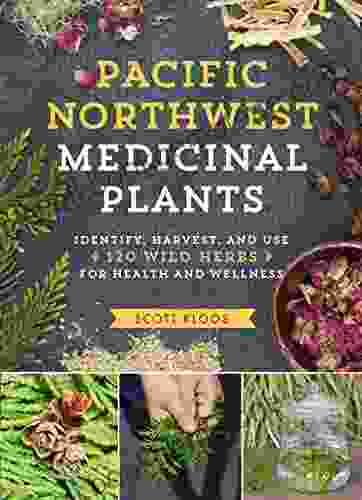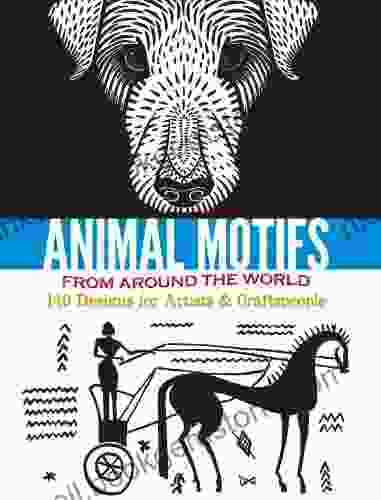Unveiling the Healing Treasures of the Pacific Northwest: A Comprehensive Guide to Medicinal Plants

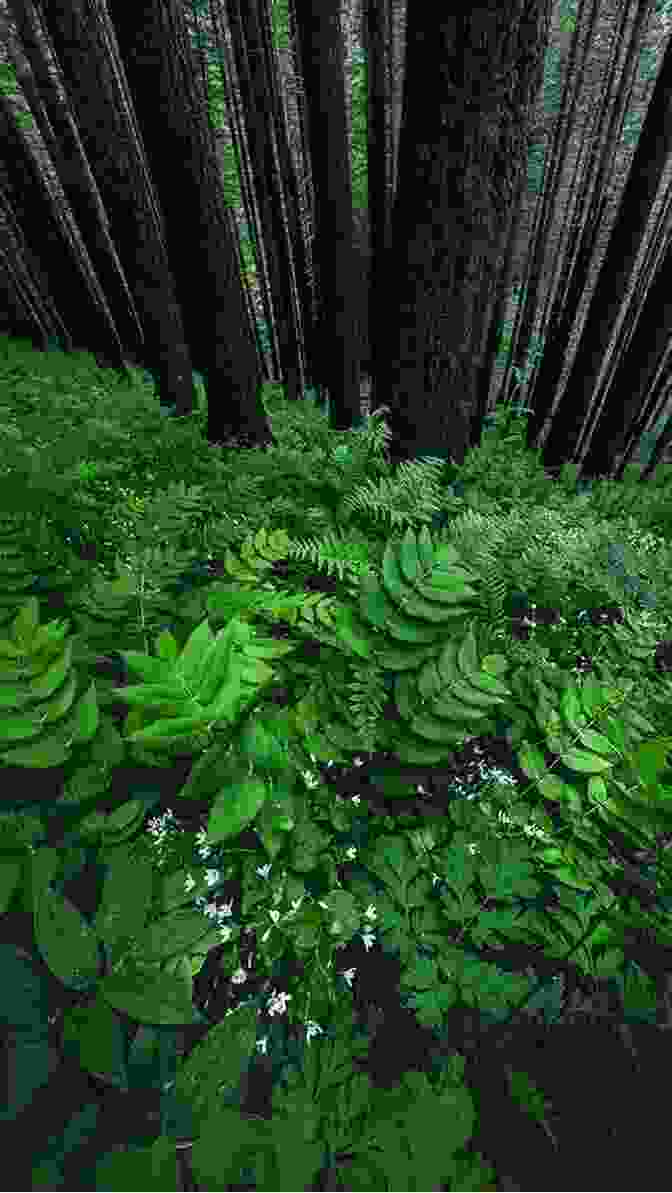
4.8 out of 5
| Language | : | English |
| File size | : | 89731 KB |
| Text-to-Speech | : | Enabled |
| Screen Reader | : | Supported |
| Enhanced typesetting | : | Enabled |
| X-Ray | : | Enabled |
| Print length | : | 417 pages |
| Lending | : | Enabled |
Nestled along the majestic coastline and towering mountains of the Pacific Northwest lies a treasure trove of medicinal plants with profound healing properties. From the towering cedars that have sustained Native American communities for centuries to the antioxidant-rich salmonberries that dot forest understories, the region's flora holds a wealth of natural remedies.
In this comprehensive guide, we will embark on a journey to discover these remarkable medicinal plants, exploring their traditional uses, potential health benefits, and ecological significance. Let us delve into the healing wisdom of the Pacific Northwest and unlock the wonders of its botanical pharmacy.
Western Red Cedar
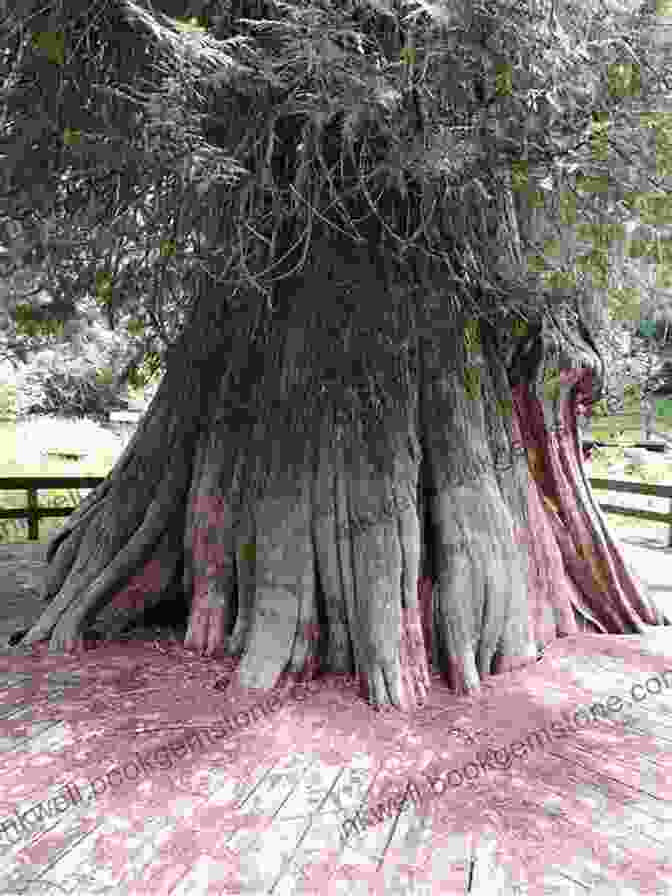
Description and Traditional Uses
The Western Red Cedar (Thuja plicata) is a towering conifer tree that dominates forests throughout the Pacific Northwest. Its aromatic foliage and reddish-brown bark have been revered by Native American tribes for their medicinal properties for millennia.
Traditionally, the leaves, bark, and wood of cedar were used to treat a wide range of ailments, including respiratory infections, skin conditions, and pain. Cedar tea was used as an expectorant to clear congestion and soothe coughs, while cedar oil was applied topically to relieve skin irritation and inflammation.
Potential Health Benefits
Scientific research has confirmed some of the traditional uses of cedar. Cedarleaf oil has been shown to possess antimicrobial and antifungal properties, making it effective against various infections. In addition, studies suggest that cedar may have anti-inflammatory and analgesic effects, supporting its use for pain management.
Ecological Significance
Western Red Cedar plays a crucial role in the Pacific Northwest ecosystem. Its decaying wood provides habitat for a myriad of insects, fungi, and other organisms. The tree also acts as a natural water filter, improving the quality of watersheds and providing clean water for wildlife and human communities.
Salmonberry

Description and Traditional Uses
Salmonberry (Rubus spectabilis) is a deciduous shrub that flourishes in moist woodlands and along streambanks throughout the Pacific Northwest. Its tart, juicy berries have been a staple food source for Native American tribes.
In traditional medicine, salmonberry was used to treat digestive ailments, skin conditions, and as a general tonic. The berries were consumed fresh or dried, and their juice was used as an eyewash to soothe irritation.
Potential Health Benefits
Salmonberry berries are a rich source of antioxidants, including anthocyanins and flavonoids. These compounds have been shown to protect against cellular damage caused by free radicals, potentially reducing the risk of chronic diseases such as cancer and heart disease.
Additionally, salmonberries contain a significant amount of vitamin C, which is essential for immune function and skin health.
Ecological Significance
Salmonberry thickets provide food and shelter for a variety of wildlife, including birds, small mammals, and insects. The plant's extensive root system helps stabilize soil and prevent erosion, contributing to the overall health of forest ecosystems.
Elderberry

Description and Traditional Uses
Elderberry (Sambucus nigra) is a deciduous shrub or small tree that thrives in moist areas and along forest edges. Its dark purple berries have been used for centuries in traditional medicine to treat colds, flu, and other ailments.
Native American tribes used elderberry syrup, tea, and extracts to combat infections, alleviate inflammation, and stimulate the immune system. The flowers and leaves were also employed for their medicinal properties.
Potential Health Benefits
Elderberries are a powerhouse of antioxidants, particularly anthocyanins. Studies have shown that elderberry extract may have antiviral and antibacterial effects, making it a potential natural remedy for respiratory infections.
In addition, elderberry has been found to boost the immune system, reducing the severity and duration of colds and flu.
Ecological Significance
Elderberry bushes provide food and nesting sites for a variety of bird species, including songbirds, robins, and waxwings. The plant's flowers attract pollinators, such as bees and butterflies, contributing to the pollination of other plants in the ecosystem.
Cascara

Description and Traditional Uses
Cascara (Rhamnus purshiana) is a deciduous shrub or small tree that is native to the Pacific Northwest. Its bark has been traditionally used as a laxative by Native American tribes and early settlers.
Cascara bark contains a compound called anthraquinone, which stimulates the colon and promotes bowel movements. It was commonly brewed into a tea or taken in capsule form to relieve constipation.
Potential Health Benefits
Cascara bark is an effective natural laxative that can help relieve occasional constipation. It may also be beneficial for individuals with hemorrhoids or anal fissures, as it can soften stools and reduce straining during bowel movements.
It is important to note that cascara should be used cautiously, as excessive consumption can lead to dehydration and electrolyte imbalances.
Ecological Significance
Cascara trees provide food and shelter for a variety of wildlife, including birds, small mammals, and insects. The plant's berries are eaten by birds, while its leaves and bark are used as nesting materials by many species.
Stinging Nettle
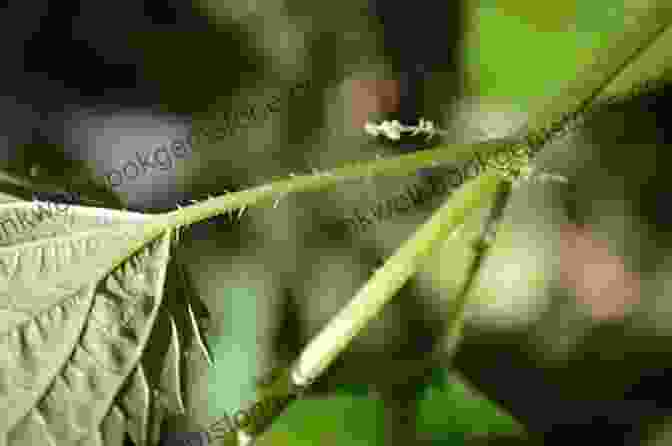
Description and Traditional Uses
Stinging Nettle (Urtica dioica) is a perennial plant that is found in moist areas and disturbed habitats throughout the Pacific Northwest. Its leaves and stems are covered in tiny, stinging hairs that inject histamine and other chemicals into the skin when touched.
Despite its prickly exterior, Stinging Nettle has a long history of medicinal use. Native American tribes employed it to treat urinary tract infections, skin rashes, and joint pain. It was also used to make a nutritious tea and as a spring tonic.
Potential Health Benefits
Stinging Nettle is rich in vitamins, minerals, and antioxidants. It has diuretic properties, which can help flush out toxins and excess fluid from the body. The plant may also be beneficial for reducing inflammation and easing symptoms of allergies and arthritis.
It is important to harvest and handle Stinging Nettle with care, wearing gloves to avoid skin irritation.
Ecological Significance
Stinging Nettle provides food and shelter for a variety of insects, including butterflies, moths, and aphids. The plant's dense growth can also deter deer and other herbivores from browsing on nearby vegetation.
Camas
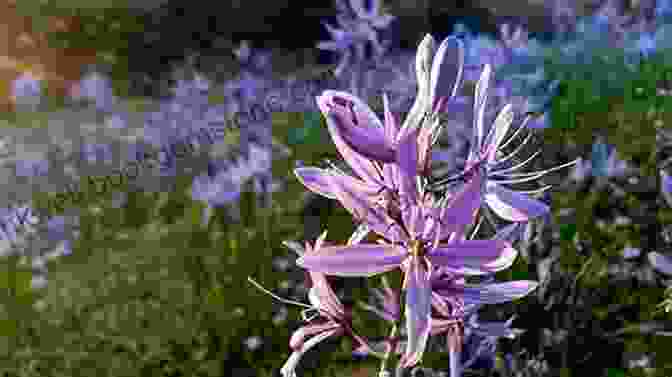
Description and Traditional Uses
Camas (Camassia quamash) is a perennial plant that is native to the Pacific Northwest. Its distinctive blue-purple flowers bloom in the spring, creating vibrant displays across meadows and prairies.
Camas bulbs were a staple food source for Native American tribes in the region. They were harvested in the spring and summer, then dried and ground into a nutritious flour. Camas bulbs were also used medicinally to treat burns, wounds, and skin infections.
Potential Health Benefits
4.8 out of 5
| Language | : | English |
| File size | : | 89731 KB |
| Text-to-Speech | : | Enabled |
| Screen Reader | : | Supported |
| Enhanced typesetting | : | Enabled |
| X-Ray | : | Enabled |
| Print length | : | 417 pages |
| Lending | : | Enabled |
Do you want to contribute by writing guest posts on this blog?
Please contact us and send us a resume of previous articles that you have written.
 Best Book
Best Book Page Flip
Page Flip Bookshelf
Bookshelf Literary loom
Literary loom Chapter
Chapter Bookish
Bookish PageTurner
PageTurner Bibliophile
Bibliophile Story
Story Inkwell
Inkwell Bookworm
Bookworm Labyrinth
Labyrinth Plot Twist
Plot Twist Prose
Prose Paperback
Paperback Storyteller
Storyteller Sanctuary
Sanctuary Fiction
Fiction Reading
Reading Chronicle
Chronicle Read
Read Giuseppe Cristiano
Giuseppe Cristiano Diane Wilson
Diane Wilson Tulku Thondup
Tulku Thondup Christopher Johns
Christopher Johns Jesse Mccarthy
Jesse Mccarthy Sanyika Shakur
Sanyika Shakur Phil Kelly
Phil Kelly Emily Hahn
Emily Hahn Eric Pyle
Eric Pyle L X Beckett
L X Beckett Mulk Raj Anand
Mulk Raj Anand Lynne Pickering
Lynne Pickering Michel Prince
Michel Prince Elizabeth Alexander
Elizabeth Alexander Hernan Diaz
Hernan Diaz Wanda M Morris
Wanda M Morris Ethan Casey
Ethan Casey Leslie Buck
Leslie Buck Paul J Foster
Paul J Foster Tessa Bailey
Tessa Bailey Joey Korenman
Joey Korenman L D Goffigan
L D Goffigan Booker T Washington
Booker T Washington Ebony Roberts
Ebony Roberts Jacob Burckhardt
Jacob Burckhardt Ralph Kern
Ralph Kern Douglas Segal
Douglas Segal Michael R Jacobs
Michael R Jacobs Dianne Pineda Kim
Dianne Pineda Kim Roark Bradford
Roark Bradford Mint Editions
Mint Editions Nicholas Gill
Nicholas Gill Phuc Tran
Phuc Tran Dick Durham
Dick Durham Scott Kloos
Scott Kloos Thomas Shor
Thomas Shor Diana Marcum
Diana Marcum Malcolm X
Malcolm X Peter Spiegelman
Peter Spiegelman Lindsey Pogue
Lindsey Pogue Rylee Tipton
Rylee Tipton Greg Manning
Greg Manning Emily Byrne Curtis
Emily Byrne Curtis James Egan
James Egan John Brewer
John Brewer Christopher Hart
Christopher Hart Grigori Grabovoi
Grigori Grabovoi Rachel Aaron
Rachel Aaron Robyne Leblanc
Robyne Leblanc Kelley Swain
Kelley Swain Pablo Hidalgo
Pablo Hidalgo Tom Shone
Tom Shone Bil Donovan
Bil Donovan Karen Karon
Karen Karon Rebecca Solnit
Rebecca Solnit Harry Harrison
Harry Harrison John Sandford
John Sandford Michelle Lawson
Michelle Lawson Kate Stevens
Kate Stevens Neil Lancaster
Neil Lancaster Radim Malinic
Radim Malinic Matthew Farrer
Matthew Farrer Tina Fey
Tina Fey Diane Keaton
Diane Keaton Kevin Brownlow
Kevin Brownlow Madeleine Orban Szontagh
Madeleine Orban Szontagh Patti Smith
Patti Smith Jan Kunz
Jan Kunz Imbolo Mbue
Imbolo Mbue Kristen Dutkiewicz
Kristen Dutkiewicz Thomas Booth
Thomas Booth Max Fatouretchi
Max Fatouretchi Tanya Talaga
Tanya Talaga Emma Svensson
Emma Svensson Jean Muenchrath
Jean Muenchrath Paul Cornell
Paul Cornell Edgar Allan Poe
Edgar Allan Poe Paul Noble
Paul Noble Pam Young
Pam Young Chris Legaspi
Chris Legaspi Robert D Armstrong
Robert D Armstrong Kale James
Kale James Paul Doyle
Paul Doyle Gananath Obeyesekere
Gananath Obeyesekere Ralph Cotton
Ralph Cotton Modris Eksteins
Modris Eksteins Lynne M Thomas
Lynne M Thomas David A Price
David A Price Dermot Mcevoy
Dermot Mcevoy David A Robertson
David A Robertson Michael Dante Dimartino
Michael Dante Dimartino Eliot Peper
Eliot Peper Whitney Chadwick
Whitney Chadwick Paper Monument
Paper Monument Jonathan Green
Jonathan Green Dessy Tsolova
Dessy Tsolova Dr Cecil H H Mills
Dr Cecil H H Mills Glenn Rudin
Glenn Rudin Eva Marie Magill Oliver
Eva Marie Magill Oliver Benjamin R Jordan
Benjamin R Jordan Robert M Utley
Robert M Utley E E Knight
E E Knight Rohan M Vider
Rohan M Vider Emma Block
Emma Block Geoff Kersey
Geoff Kersey Dennis E Taylor
Dennis E Taylor Jesse Storm
Jesse Storm Ruth Wilshaw
Ruth Wilshaw Devon C Ford
Devon C Ford Dori Griffin
Dori Griffin E B Dawson
E B Dawson Ellen Eagle
Ellen Eagle Matt Johnston
Matt Johnston Edwin Harkness Spina
Edwin Harkness Spina Sara Boccaccini Meadows
Sara Boccaccini Meadows Daniel Verastiqui
Daniel Verastiqui Ben Swanepoel
Ben Swanepoel Ashleynicole
Ashleynicole Bruno Munari
Bruno Munari James Goddard
James Goddard Eric Thomas
Eric Thomas Patrick Youngblood
Patrick Youngblood Ladoris Hazzard Cordell
Ladoris Hazzard Cordell Marina Bakasova
Marina Bakasova Alberto Manguel
Alberto Manguel Michael Eric Dyson
Michael Eric Dyson Sam Baldwin
Sam Baldwin Kassanna
Kassanna Vera Nazarian
Vera Nazarian Taylor Dibbert
Taylor Dibbert Octavia Hyde
Octavia Hyde Naglaa Ghali
Naglaa Ghali Emma Gift
Emma Gift Richard Fortey
Richard Fortey Elizabeth L Eisenstein
Elizabeth L Eisenstein L L Richman
L L Richman Hillary Kerr
Hillary Kerr Violet Kupersmith
Violet Kupersmith Stu Lloyd
Stu Lloyd Jupiter Kids
Jupiter Kids Elizabeth Wenk
Elizabeth Wenk Michael R Pitts
Michael R Pitts Mike Yoshiaki Daikubara
Mike Yoshiaki Daikubara Pm Johnson
Pm Johnson Jm Guillen
Jm Guillen Mia Leonin
Mia Leonin Michael Lakin
Michael Lakin Jason Tselentis
Jason Tselentis Ruth Leaf
Ruth Leaf Maria Nolasco
Maria Nolasco Gina S
Gina S Janet Lynn Cano
Janet Lynn Cano Edmund S Wong
Edmund S Wong Loretta Outwater Cox
Loretta Outwater Cox Jason Caldwell
Jason Caldwell Nella Larsen
Nella Larsen Sergey Skudaev
Sergey Skudaev Wilfrid Jonson
Wilfrid Jonson Gary K Wolf
Gary K Wolf Jana Marcus
Jana Marcus E M Forster
E M Forster Jared Blando
Jared Blando Gene Perret
Gene Perret Jim Krause
Jim Krause James A Moore
James A Moore Insight Traveller
Insight Traveller Jonathan Yanez
Jonathan Yanez Maggie Nelson
Maggie Nelson Richard Tabor Greene
Richard Tabor Greene Nai
Nai Elizabeth Stansberry
Elizabeth Stansberry C Pierce Salguero
C Pierce Salguero Edwin George Lutz
Edwin George Lutz Brian Dougherty
Brian Dougherty Dennis Banks
Dennis Banks Simon Gervais
Simon Gervais Wendy E Simmons
Wendy E Simmons Laura Vae Gatz
Laura Vae Gatz Dr Harpal Sodhi
Dr Harpal Sodhi Hadley Freeman
Hadley Freeman Maurice White
Maurice White Marcel Liebman
Marcel Liebman Steven M Barrett
Steven M Barrett Isidra Mencos
Isidra Mencos Dominick Dunne
Dominick Dunne Jill Culiner
Jill Culiner Zachary Fenell
Zachary Fenell El Griffin
El Griffin Elizabeth Becker
Elizabeth Becker Grace Hamilton
Grace Hamilton Roberta Carter Clark
Roberta Carter Clark Jasmine Guillory
Jasmine Guillory Kate Betts
Kate Betts Francis Hopkinson Smith
Francis Hopkinson Smith Victoria Christopher Murray
Victoria Christopher Murray Jackie Simmonds
Jackie Simmonds Jean Luc Nancy
Jean Luc Nancy S Rob
S Rob Henrietta Harrison
Henrietta Harrison Gabriella Contestabile
Gabriella Contestabile Dorothy Dent
Dorothy Dent Diane Seuss
Diane Seuss Joel Enos
Joel Enos Nicholas Wapshott
Nicholas Wapshott Robyn Neild
Robyn Neild Logan Jacobs
Logan Jacobs Wensley Clarkson
Wensley Clarkson Tessa Hadley
Tessa Hadley Devin Harbison
Devin Harbison Tess Burrows
Tess Burrows Ina Saltz
Ina Saltz Mark Franko
Mark Franko William Silvester
William Silvester Eric Gill
Eric Gill Tim Travis
Tim Travis Jody Houton
Jody Houton Mindy Mejia
Mindy Mejia Jane Maday
Jane Maday Mark Cooper
Mark Cooper Tahir Shah
Tahir Shah Larry Mcmurtry
Larry Mcmurtry Rachel Polonsky
Rachel Polonsky Reed Farrel Coleman
Reed Farrel Coleman Randy Wayne White
Randy Wayne White Uncle Brazil
Uncle Brazil Michael Arndt
Michael Arndt Sari Botton
Sari Botton Graham Webb
Graham Webb Sarah Turnbull
Sarah Turnbull Tiffany Dufu
Tiffany Dufu Richard Detrich
Richard Detrich John G Neihardt
John G Neihardt Rick Furphy
Rick Furphy John F Harnish
John F Harnish Christine A Collins
Christine A Collins Ellen Grady
Ellen Grady Kevin Kwan
Kevin Kwan Elie Wiesel
Elie Wiesel Valerie Boyd
Valerie Boyd William Dalrymple
William Dalrymple Rosie Mercado
Rosie Mercado Shimrit Elisar
Shimrit Elisar William V Dunning
William V Dunning Elaine A Powers
Elaine A Powers Izzy Paskowitz
Izzy Paskowitz Doug Gelbert
Doug Gelbert Victoria Lewis
Victoria Lewis Elizabeth Bonesteel
Elizabeth Bonesteel Thad Carhart
Thad Carhart Maria Arango Diener
Maria Arango Diener S R Witt
S R Witt Michael Ferber
Michael Ferber Elena Gorokhova
Elena Gorokhova Joy Harjo
Joy Harjo Emma Baxter Wright
Emma Baxter Wright Faythe Levine
Faythe Levine Kiese Laymon
Kiese Laymon J R Ward
J R Ward Josef Feller
Josef Feller Julie Kavanagh
Julie Kavanagh Jeanne St James
Jeanne St James Jessica Hische
Jessica Hische Spike Bucklow
Spike Bucklow Edward Victor
Edward Victor Megan Hess
Megan Hess Jennifer Clement
Jennifer Clement Nathan Hystad
Nathan Hystad David Bergsland
David Bergsland Arlo Adams
Arlo Adams Joanne Fink
Joanne Fink Jane Evans
Jane Evans Langston Hughes
Langston Hughes Kareem Aal
Kareem Aal Karen Kluglein
Karen Kluglein Diane Kochilas
Diane Kochilas Mika Tufuga Valai
Mika Tufuga Valai Maya Washington
Maya Washington Paul E Cooley
Paul E Cooley Jack Campbell
Jack Campbell Noah Galloway
Noah Galloway Nichole Perkins
Nichole Perkins Neil Baldwin
Neil Baldwin Emily Carr
Emily Carr T M Haviland
T M Haviland Mala Kacenberg
Mala Kacenberg Kurt Vonnegut
Kurt Vonnegut Elaine Bertolotti
Elaine Bertolotti Jeff Farr
Jeff Farr George Catlin
George Catlin Michael R Fletcher
Michael R Fletcher Ferrett Steinmetz
Ferrett Steinmetz Scott Olsen
Scott Olsen Dylan Birtolo
Dylan Birtolo Robert N Charrette
Robert N Charrette Robert E Kapsis
Robert E Kapsis Zongyan Hu
Zongyan Hu Victoria Shearer
Victoria Shearer E E Smith
E E Smith John Matthews
John Matthews Emerson Hough
Emerson Hough Elizabeth Kincaid
Elizabeth Kincaid Stanley Vestal
Stanley Vestal Matt Fox
Matt Fox Lauren Beukes
Lauren Beukes Regis Yaworski
Regis Yaworski Marvin Kalb
Marvin Kalb Johannes Zang
Johannes Zang Doris Lessing
Doris Lessing G A Matiasz
G A Matiasz Wendy Lesser
Wendy Lesser Helen Keller
Helen Keller Kensuke Okabayashi
Kensuke Okabayashi Greg Simonds
Greg Simonds Geniuz Gamer
Geniuz Gamer Megan K Stack
Megan K Stack Shaunna Russell
Shaunna Russell Jamie K Schmidt
Jamie K Schmidt Jonathan Coe
Jonathan Coe Edward Branigan
Edward Branigan Michael Showalter
Michael Showalter Diana O Gilvie
Diana O Gilvie John Dickie
John Dickie Dima Zales
Dima Zales Elizabeth Miki Brina
Elizabeth Miki Brina Emily Scherb
Emily Scherb Emily Colson
Emily Colson Karen Redrobe Beckman
Karen Redrobe Beckman Judy Botello
Judy Botello Joy Deja King
Joy Deja King Douglas Johnson
Douglas Johnson Elizabeth Faidley
Elizabeth Faidley Dom Joly
Dom Joly Rosecrans Baldwin
Rosecrans Baldwin Iceberg Slim
Iceberg Slim Elise Mahan
Elise Mahan Moritz Fink
Moritz Fink Jasper Rees
Jasper Rees James Dickey
James Dickey William Blake
William Blake Mary Jane Jacob
Mary Jane Jacob Brett Tate
Brett Tate Luana Luconi Winner
Luana Luconi Winner Sean D Young
Sean D Young Eat Like A Local
Eat Like A Local Robert Ullian
Robert Ullian Peter Marren
Peter Marren David Archer
David Archer Joseph Toone
Joseph Toone Zarifa Ghafari
Zarifa Ghafari Robert E Howard
Robert E Howard Margarita Gokun Silver
Margarita Gokun Silver Donald Hamilton
Donald Hamilton John Anthony Davis
John Anthony Davis Yehuda Koren
Yehuda Koren Mark Farnsworth
Mark Farnsworth Hannah Dale
Hannah Dale John Brunner
John Brunner Dr Leo Henry Wildeman
Dr Leo Henry Wildeman Raymond L Weil
Raymond L Weil Wing Over
Wing Over Jian Ping
Jian Ping John S C Abbott
John S C Abbott Mark Stattelman
Mark Stattelman Elijah Nicholas Wilson
Elijah Nicholas Wilson Lisa Kleypas
Lisa Kleypas Loki Renard
Loki Renard Gregory Curtis
Gregory Curtis Tom Cole
Tom Cole Karen Campbell
Karen Campbell Matteo Cossu
Matteo Cossu Eli Brook
Eli Brook Edith Young
Edith Young Laura A Macaluso
Laura A Macaluso Kristal Wick
Kristal Wick Derek Murphy
Derek Murphy Ryan Kane
Ryan Kane Dk Eyewitness
Dk Eyewitness Vladimir Alexandrov
Vladimir Alexandrov Michael Mcbride
Michael Mcbride Frank Right
Frank Right Jonathan Sacks
Jonathan Sacks Gavin Strange
Gavin Strange Bruce Cook
Bruce Cook Edward Chisholm
Edward Chisholm Meb Keflezighi
Meb Keflezighi Neil Bennion
Neil Bennion Manifestation Publishing House
Manifestation Publishing House Yuri Leving
Yuri Leving Eddy De Wind
Eddy De Wind Nicholas Turner
Nicholas Turner Emily Craft By Maker Academy
Emily Craft By Maker Academy Ellen Winner
Ellen Winner S J Pajonas
S J Pajonas Elin Hilderbrand
Elin Hilderbrand Julian Armfield
Julian Armfield Arthur C Danto
Arthur C Danto Robert Bree
Robert Bree Patrick Syme
Patrick Syme Douglas Phillips
Douglas Phillips Richard Tongue
Richard Tongue Dustin Graham
Dustin Graham Arthur C Clarke
Arthur C Clarke Nick Hunt
Nick Hunt Ellen Besen
Ellen Besen Lisa Rose Wright
Lisa Rose Wright Janet Wood
Janet Wood Elizabeth Mowry
Elizabeth Mowry Kyle West
Kyle West Helene Cixous
Helene Cixous Ed Hooks
Ed Hooks Jenni Basch
Jenni Basch Ellisa Bender
Ellisa Bender Lea Rawls
Lea Rawls Laurence Maslon
Laurence Maslon Dervla Murphy
Dervla Murphy James W Stanfield Jr
James W Stanfield Jr E M Hardy
E M Hardy Sarah Nisbett
Sarah Nisbett Rick Partlow
Rick Partlow Anthony J Melchiorri
Anthony J Melchiorri Nicholas Woodsworth
Nicholas Woodsworth Liza Rodman
Liza Rodman Ed Sikov
Ed Sikov Don Peri
Don Peri Jennie Smallenbroek
Jennie Smallenbroek Yoshitomo Ikawa
Yoshitomo Ikawa Lewis Hector Garrard
Lewis Hector Garrard Peter Cristofono
Peter Cristofono Jeff Long
Jeff Long Edward Struzik
Edward Struzik E John B Allen
E John B Allen William Kent Krueger
William Kent Krueger Sei Shonagon
Sei Shonagon Keeyla Meadows
Keeyla Meadows Elena Tchernichova
Elena Tchernichova Nancy Reyner
Nancy Reyner Peter Carey
Peter Carey Eddie Armer
Eddie Armer Donna Everhart
Donna Everhart Halka Chronic
Halka Chronic Rebecca Fraser
Rebecca Fraser Edward Burns
Edward Burns Vasily Mahanenko
Vasily Mahanenko Phyllis Klotz
Phyllis Klotz Susanna Kaysen
Susanna Kaysen Tilar J Mazzeo
Tilar J Mazzeo Phil Maxey
Phil Maxey Marc Steinberg
Marc Steinberg Pedro Martinez
Pedro Martinez Maria Hinojosa
Maria Hinojosa T C Edge
T C Edge Jeff Lenburg
Jeff Lenburg Nina Garcia
Nina Garcia Jackie Barrass
Jackie Barrass Sylvia Kristel
Sylvia Kristel Didier Ghez
Didier Ghez Diana Somerville
Diana Somerville Edward Brody
Edward Brody Michael Marshall Smith
Michael Marshall Smith Ellen Murkison
Ellen Murkison Orson Scott Card
Orson Scott Card Roz Marshall
Roz Marshall Joi Barrios
Joi Barrios Hugh Iwanicki
Hugh Iwanicki Drmw
Drmw Emily Haynes
Emily Haynes Edvard Munch
Edvard Munch C M Carney
C M Carney Language Learning University
Language Learning University Duncan Barrett
Duncan Barrett Elizabeth Bear
Elizabeth Bear Prakruti Prativadi
Prakruti Prativadi El Greco
El Greco Mark Twain
Mark Twain Lady Dia
Lady Dia Richard Huber
Richard Huber Gustave Dore
Gustave Dore Olga Lengyel
Olga Lengyel Roger Scruton
Roger Scruton Harry Whitewolf
Harry Whitewolf Diane Greenberg
Diane Greenberg Edward M Lerner
Edward M Lerner Sloan De Forest
Sloan De Forest Steve Balderson
Steve Balderson Clarence King
Clarence King Kate Lock
Kate Lock Mary Wellesley
Mary Wellesley Kim Brown Seely
Kim Brown Seely Sylvia Foster
Sylvia Foster Darin Martineau
Darin Martineau Eric Rickstad
Eric Rickstad Rory Moulton
Rory Moulton Daniel Ankele
Daniel Ankele Sarah Lentz
Sarah Lentz Lucy Coleman
Lucy Coleman Joe Greer
Joe Greer Latin Travel
Latin Travel Lexie Winston
Lexie Winston Jamie James
Jamie James Jennifer Frick Ruppert
Jennifer Frick Ruppert R S Penney
R S Penney Peter Lord
Peter Lord Stephanie Elizondo Griest
Stephanie Elizondo Griest Dick Jackson
Dick Jackson Edward Sylvester Ellis
Edward Sylvester Ellis Eloisa James
Eloisa James James R Lilley
James R Lilley Thomas Crow
Thomas Crow Gabriela Jauregui
Gabriela Jauregui Kellye Garrett
Kellye Garrett Rachel Mclean
Rachel Mclean Kurt Meissner
Kurt Meissner Martha Bayne
Martha Bayne W R Tymms
W R Tymms Eliza Ruhamah Scidmore
Eliza Ruhamah Scidmore Jonathan Smidt
Jonathan Smidt Joe Holt
Joe Holt Tarana Burke
Tarana Burke Emiliano Zapata
Emiliano Zapata Tracy Brown
Tracy Brown Jade Royal
Jade Royal James A Michener
James A Michener Luigi Amara
Luigi Amara Jean Pierre Isbouts
Jean Pierre Isbouts William Silvers
William Silvers Emil Draitser
Emil Draitser Scott Eyman
Scott Eyman Edward Willett
Edward Willett Jim Green
Jim Green G Eric Francis
G Eric Francis Louis Blanc
Louis Blanc Francesco Lo Iacono
Francesco Lo Iacono Luca Turin
Luca Turin Ruth Reichl
Ruth Reichl Linda Riesenberg Fisler
Linda Riesenberg Fisler Kelly Speck
Kelly Speck Eduardo Navas
Eduardo Navas Peter F Drucker
Peter F Drucker Luke Zimmermann
Luke Zimmermann Janet Wilcox
Janet Wilcox James Joseph
James Joseph Insight Guides
Insight Guides Jacques Derrida
Jacques Derrida Richard Goodman
Richard Goodman Gabriel Miller
Gabriel Miller John Dominic Crossan
John Dominic Crossan Susan Elizabeth Jones
Susan Elizabeth Jones Eduardo Galeano
Eduardo Galeano Jamie Eubanks
Jamie Eubanks Elizabeth Brundage
Elizabeth Brundage Stephen Clarke
Stephen Clarke Terry Bennett
Terry Bennett Patricia Telesco
Patricia Telesco Charles Dellheim
Charles Dellheim Nan Sanders Pokerwinski
Nan Sanders Pokerwinski Desmond King
Desmond King Sebastien De Castell
Sebastien De Castell Wes Moore
Wes Moore Rilzy Adams
Rilzy Adams George Kubler
George Kubler Elizabeth Kendall
Elizabeth Kendall Edwidge Danticat
Edwidge Danticat Rose Art
Rose Art Tom Ryan
Tom Ryan Edgar A Whitney
Edgar A Whitney Elizabeth Size
Elizabeth Size Rosemary Mahoney
Rosemary Mahoney Tjio Kayloe
Tjio Kayloe Daniel Gross
Daniel Gross Riad Sattouf
Riad Sattouf Lewis Knight
Lewis Knight Jeff Pearlman
Jeff Pearlman Dorothy Grant
Dorothy Grant Paris Permenter
Paris Permenter Elle Wright
Elle Wright Miss Jazzie
Miss Jazzie Skywatcher Press
Skywatcher Press Sarah Pinsker
Sarah Pinsker Toby Neal
Toby Neal Debra Kayn
Debra Kayn Jean Le Pautre
Jean Le Pautre John Michael Rivera
John Michael Rivera Roger Kahn
Roger Kahn Duncan M Webb
Duncan M Webb Ronald Malfi
Ronald Malfi
Light bulbAdvertise smarter! Our strategic ad space ensures maximum exposure. Reserve your spot today!
 Charles DickensFollow ·3.1k
Charles DickensFollow ·3.1k Michael CrichtonFollow ·3.7k
Michael CrichtonFollow ·3.7k Raymond ParkerFollow ·6.6k
Raymond ParkerFollow ·6.6k Ian PowellFollow ·19.5k
Ian PowellFollow ·19.5k Cristian CoxFollow ·6.1k
Cristian CoxFollow ·6.1k Jared PowellFollow ·19.8k
Jared PowellFollow ·19.8k Rick NelsonFollow ·11.1k
Rick NelsonFollow ·11.1k Chance FosterFollow ·9.5k
Chance FosterFollow ·9.5k
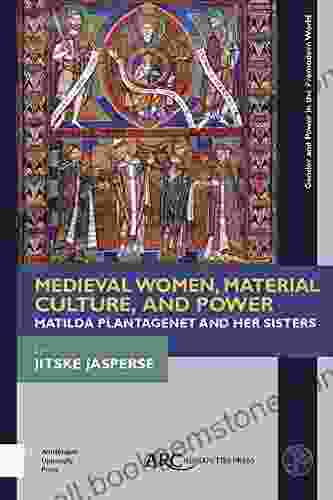
 Dennis Hayes
Dennis HayesMatilda Plantagenet and Her Sisters: Gender and Power in...
The lives of Matilda Plantagenet and her...

 Carl Walker
Carl WalkerA Comprehensive Guide to Defining Yourself or Your...
In today's competitive world, it's...

 Eliot Foster
Eliot FosterThe Civilization of the Renaissance in Italy: Classics,...
The Renaissance was a period of great cultural...
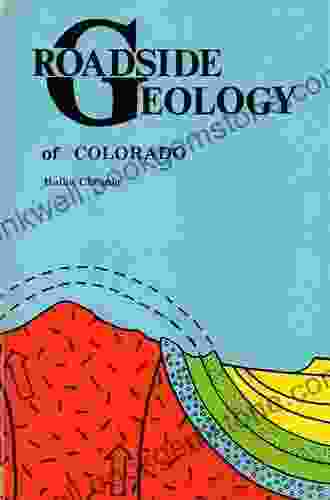
 Floyd Richardson
Floyd RichardsonUnveiling the Roadside Geology of Colorado: A Halka...
Colorado, a state renowned for its...
4.8 out of 5
| Language | : | English |
| File size | : | 89731 KB |
| Text-to-Speech | : | Enabled |
| Screen Reader | : | Supported |
| Enhanced typesetting | : | Enabled |
| X-Ray | : | Enabled |
| Print length | : | 417 pages |
| Lending | : | Enabled |


